How To Treat Mange In Dogs At Home? Best Natural Home Remedies For Dog Mange


For all dog owners, you should be well aware of the fact that it is quite possible that your dog might get mange. But if you are a first-time dog owner, then you might not know what is mange.
Even if you don’t know what is mange, it is important how to treat mange in dogs at home. The disease is quite serious and can be very itchy for the dog, it can lead to a second-degree skin infection and other types of problems as well.
If you wanna know more about dogs with the mange and how to get rid of mange on dogs, then keep on reading through this article by scrolling down below.
Understanding What Is Mange
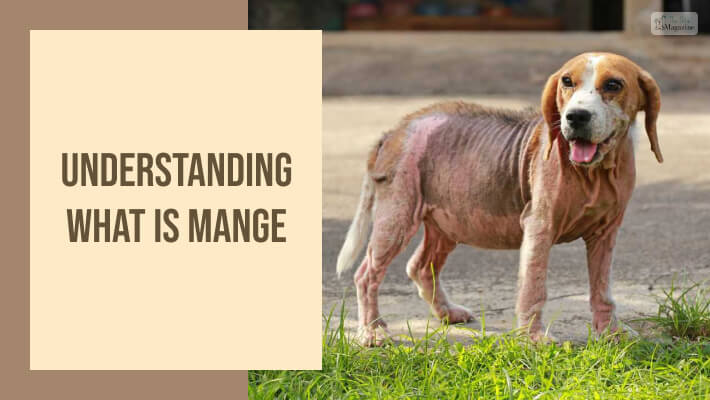
When it comes to understanding what mange is, it is a type of disease that is caused by microscopic mites that live on the skin of your dogs. But when it comes to mange, there are mainly three types, which are.
Sarcoptic Mange

“Sarcoptic mange mites are not normal parts of your dog’s skin fauna, so when they are present, they typically cause problems.”
The sarcoptic mites are very contagious, and they are able to infect healthy adults who are warm-blooded. Sarcoptic mites are also known to burrow under the skin of your dog.
Demodectic Mange
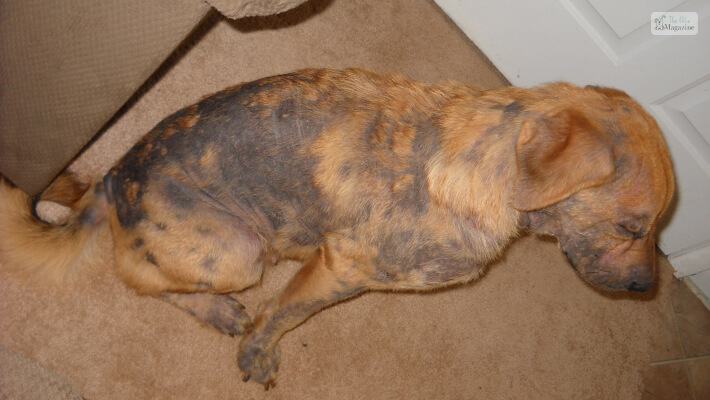
“Demodectic mange is an irritating skin condition caused by mites of the genus Demodex.” Unlike the sarcoptic mite, the demodectic mange is not a big problem, as they live on the skin of your dog and don’t cause any such problems.
The problem occurs when your old, young and sick dog is not able to respond to the small bugs, which usually grow in numbers. The demodectic mange usually becomes a problem for small puppies if they get affected by their mother.
Cheyletiella Mange
“This condition rarely causes the intense itching that other types of mange do, and the mites are often easy to eradicate with over-the-counter, topical flea treatment.”
Also known as “walking dandruff” or known as Cheyletiellosis, this is the problem that happens when Cheyletiella mange attacks the dog’s skin. But the Cheyletiella mange is not as problematic as the Sarcoptic and Demodectic mange.
What Are The Symptoms Of Dog Mange?
With the different types of sarcoptic and demodectic mange, the symptoms of the disease are quite similar, and that is why few of the most common types of symptoms are, as such.
- Red, Irritated Skin
- Scaly Or Scabby Skin
- Hair Loss
In the sarcoptic mite infestation, there are certain other symptoms, like intense itchiness, which is not at all common with the demodectic infestation of mites.
Mites usually feed on certain areas of the dog’s body that have lesser hair, especially around the abdomen, elbows and armpits. Around the ear margins, you can always make out if your dog has mange or not. It is an easy place to locate for mange.
Home Remedies For Dog Mange
It is quite possible that over-the-counter medications don’t always work out, then you can always try out homemade remedies to treat your dog’s mange. There are certain very popular home remedies you can easily try out to cure your dog’s mange.
1. Olive Oil

One of the best homemade remedies to cure certain types of mange is olive oil. In certain mild cases of mange, applying olive oil on the area is a great way to treat your dog’s skin.
While applying olive oil on your dog’s skin, then try it out by applying a thin layer of oil on the affected areas of the skin. The oil moisturizes the dog’s skin and, at the same time, relieves the itchiness of the dog.
2. Aloe Vera

Another great home remedy to treat your dog’s mange affected skin is applying aloe vera extract on the area. The extract of aloe vera is used to reduce itchiness and even soothe the skin of your dog.
For a few weeks, you have to regularly apply the aloe vera extract, then which would kill any of the ectoparasites on the infected mange area on your skin.
But it is important to know that aloe vera is a very toxic thing for dogs if somehow ingested. So while you are applying the aloe vera extract, make sure your dog doesn’t digest the extract at any point.
3. Yogurt
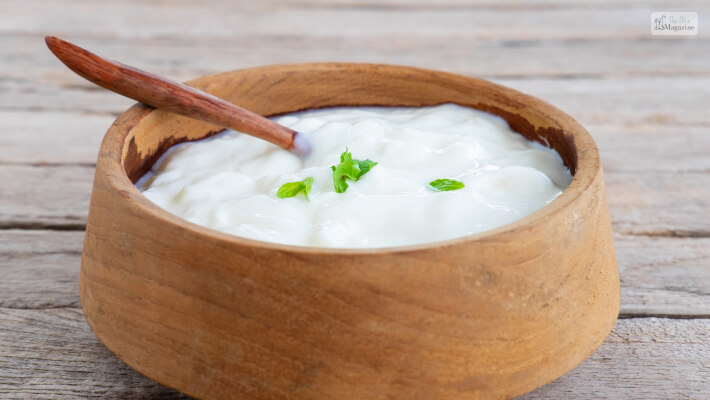
Again a popular remedy that you can use for mange is yogurt. For most owners, it is quite easy to lather yogurt on top of your dog’s skin mange.
Since plain and unsweetened yogurt contains probiotics, it helps to cure the affected skin faster. And since yogurt is good for health, so if your dog licks off the yogurt, it won’t be a big deal as yogurt is good for health.
If yogurt proves to be good for your dog’s affected skin, it is because the yogurt usually smoothers the mites on the skin. It also moisturizes the affected part of the skin, so the itchiness soothes quite a lot.
4. Lemon

With a mixture of lemon juice and water if you are treating your dog’s affected mange skin, then then this mixture is great for treating the affected area of the skin. If you want, you can also add a few pieces of garlic to the mix as well.
The acidic nature of the lemon and water mixture is a great way to treat and kill mites on your dog’s skin. It also eliminates any fungal or bacterial infestation on your dog’s skin.
If you lather lemon juice on your dog’s affected area, it is not going to affect your dog as well. Since lemon juice is not at all toxic for your dog, they are not going to ingest or lick the area as well.
5. Honey

The last great option for you to use if you are going to treat your dog’s affected skin is honey. Pure organic honey has numerous antibacterial and antifungal properties, which help in combating infestation.
If you properly lather a thick layer of honey on your dog’s mange skin, then it is going to smother the mites on your dog’s skin. Honey is one of the safest options among homemade remedies, as the dog’s affected skin.
But one of the risks of using honey is your dog will try their level best to lick it off, as all dogs love the taste of honey. So to stop your dog from licking the honey, stick a piece of duct tape on the affected area with the honey.
Anti-parasitic herbs
There are a few anti-parasitic herbs that help with ear mites or mange. Those are:
Barbados nut oil
Barbados nut oil is an anti-parasitic and anti-fungal oil that has insecticidal oil in it that makes it effective in the treatment of mange. This not only helps with mange but also with other parasites and skin problems.
There are other ways to use it as well; you can mix it with niauli oil to get the most effective result. Apply the oil mixture twice or thrice a day, and note that it is made for external use only.
Turmeric plus neem oil
Bil a turmeric root with water for about thirty minutes. For every eight ounces of water, one small root is enough. Then mix it with the neem leaf infusion and rinse your pup with the mixture.
Apply the mixture on your fur baby twice every day and continue for fourteen days. If you want, use 30 ml water for either tincture in place of the neem herbal tincture.
Karanja Oil
Karanja oil can be used in place of neem oil. This is also a very effective remedy and has anti-parasitic properties.
Neem with essential oil
Essential oils like palmarosa and geranium are good as well as safe for treating merge, but most effectively, the sarcoptic type. Using neem oil from the neem tree is also helpful and can be used for treating mange.
Neem oil forces the mites to move to the surface of the skin, and that suffocates them. Neem oil also has antiparasitic, antifungal, and antibacterial properties. This destroys the reproductive cycle of mites as well. Along with applying these oils, it is best if you give your dog regular showers.
Apple cider vinegar
Apple cider vinegar is a home remedy for mange, but a large part of the health community is still debating its effectiveness. It has the potential to destroy mite infestations, but there is a slight possibility that it can get their skin irritated, so you have to look out for it and take better care if that is happening.
Wrapping Up!
If you were wondering and worried about your dog’s affected skin full of mange and how to treat mange in dogs at home. Then this article is the answer to all your queries and questions. So if you find this article helpful, then give it a like and comment down below whether your dog suffered from affected mange skin or not.






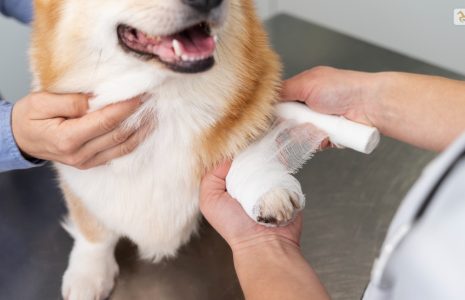
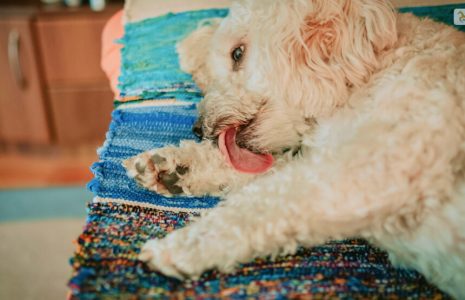
Leave A Comment